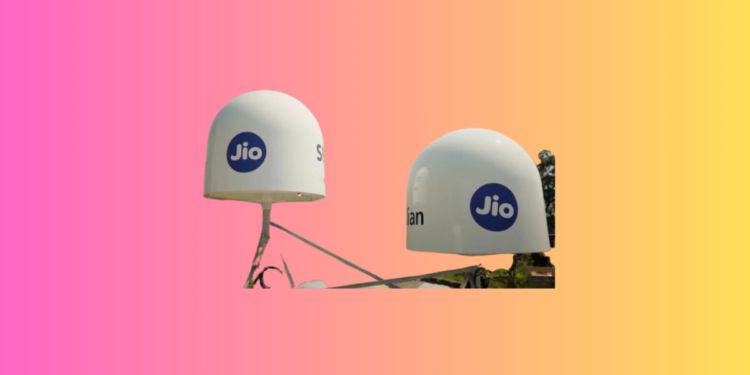Reliance Jio has introduced Reliance JioSpaceFiber, a satellite-based broadband service, as part of its offerings at the Indian Mobile Congress. In contrast to conventional broadband connections that rely on cables or fiber optics to deliver high-speed internet, JioSpaceFiber leverages communication satellites to provide internet access. It stands apart from other Jio services, such as JioAirFiber and Jio Fiber. With the installation of a satellite dish near the user’s residence, JioSpaceFiber facilitates the transmission and reception of data from satellites orbiting Earth. This innovative technology extends internet coverage to areas where traditional cable or fiber connections might not be available, particularly in rural regions. However, it is important to note that satellite internet may experience slightly higher latency or delays because data needs to travel to space and back before reaching its destination.
JioSpaceFiber has already commenced its rollout in select regions across India, including Gir in Gujarat, Korba in Chattisgarh, Nabarangpur in Odisha, and ONGC in Jorhat, Assam. To provide this service, Reliance Jio has entered into a partnership with SES, a Luxembourg-based company. This new initiative aims to disrupt the internet connectivity landscape in India by offering a viable and reliable broadband option to areas that were previously underserved.
When comparing cable broadband to satellite internet, several factors come into play, including speed, coverage, and latency. Broadband internet speeds can vary based on the type of infrastructure in place. Fiber-optic connections are known for their exceptional speed, capable of delivering speeds exceeding 1000 Mbps. Satellite internet also provides high speeds, but cable internet is typically faster and more reliable. Satellite internet has the advantage of being available in almost any location since the signal originates from space, making it a practical choice for individuals in rural areas lacking access to cable or fiber connections. In contrast, broadband options like fiber and cable are limited to areas with existing infrastructure. It’s important to note that satellite internet may come with relatively higher latency due to the necessity of data traveling to and from space. This latency could impact real-time online activities, such as gaming or video conferencing.
Satellites orbiting the Earth can be categorized into three main types:
- Geostationary Earth Orbit (GEO): GEO satellites orbit at an altitude of 35,786 kilometers above the Earth’s surface. They match the Earth’s rotation, remaining fixed above the same point on the ground. Because of their size and altitude, only three GEO satellites are needed to cover the entire surface of the Earth.
- Medium Earth Orbit (MEO): MEO satellites occupy the space between 5,000 and 12,000 kilometers above the Earth. Their lower altitude results in lower latency compared to GEO satellites. However, achieving complete coverage requires a larger number of spacecraft, typically between eight and 20.
- Low Earth Orbit (LEO): LEO satellites operate at altitudes ranging from 850 to 2,000 kilometers. LEO satellites offer the lowest latency of the three orbit types but require an exponentially higher number of satellites to ensure full coverage. Additionally, the presence of atmospheric drag at these altitudes reduces the lifespan of LEO satellites.
In summary, JioSpaceFiber represents a significant advancement in the broadband industry by leveraging satellite technology to bring high-speed internet to underserved and remote areas in India. While it may have slightly higher latency compared to traditional broadband options, its ability to reach locations without existing infrastructure makes it a valuable addition to the connectivity landscape. The choice of satellite orbits, whether GEO, MEO, or LEO, plays a critical role in determining factors such as coverage and latency, offering various advantages and trade-offs for satellite-based internet services.









